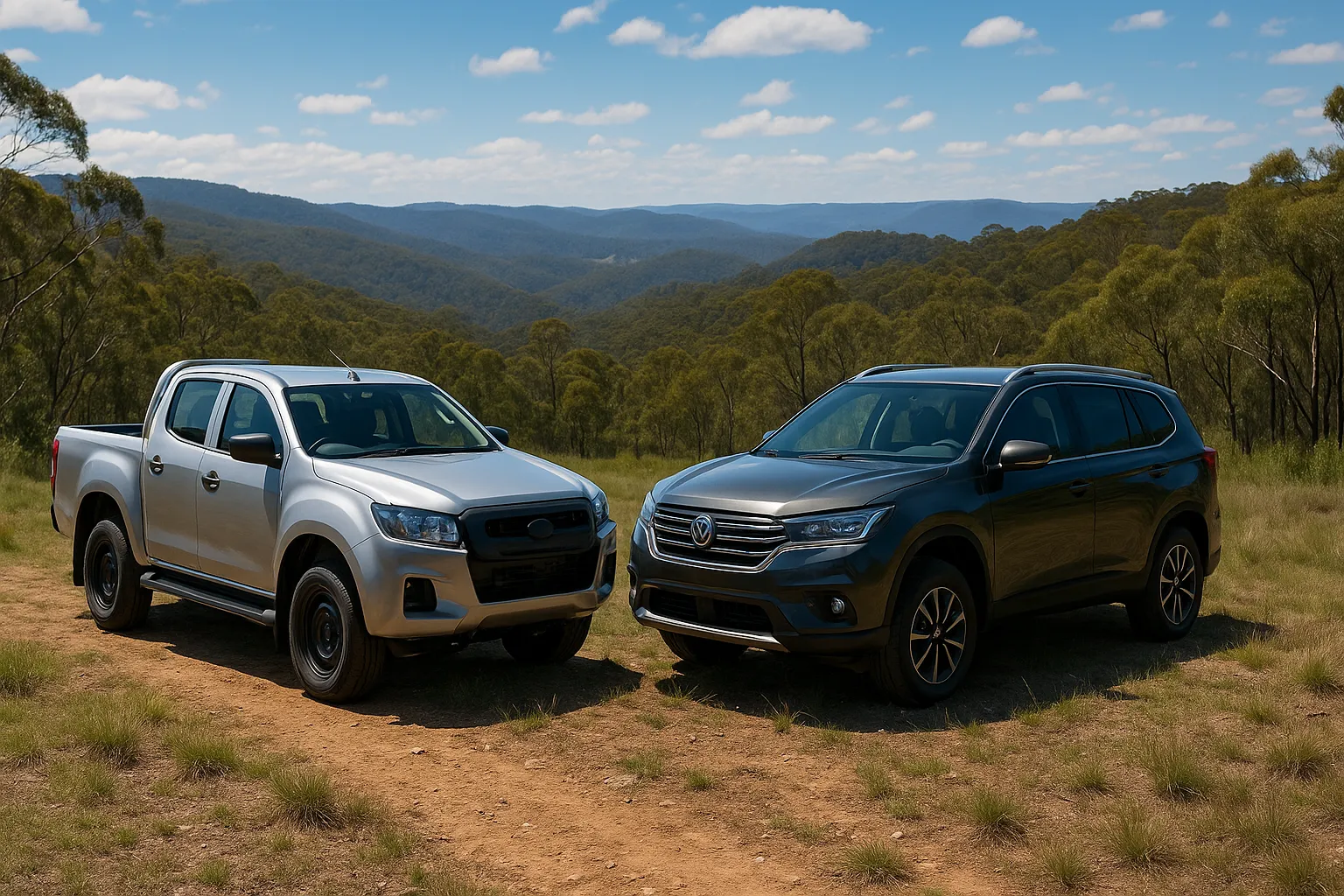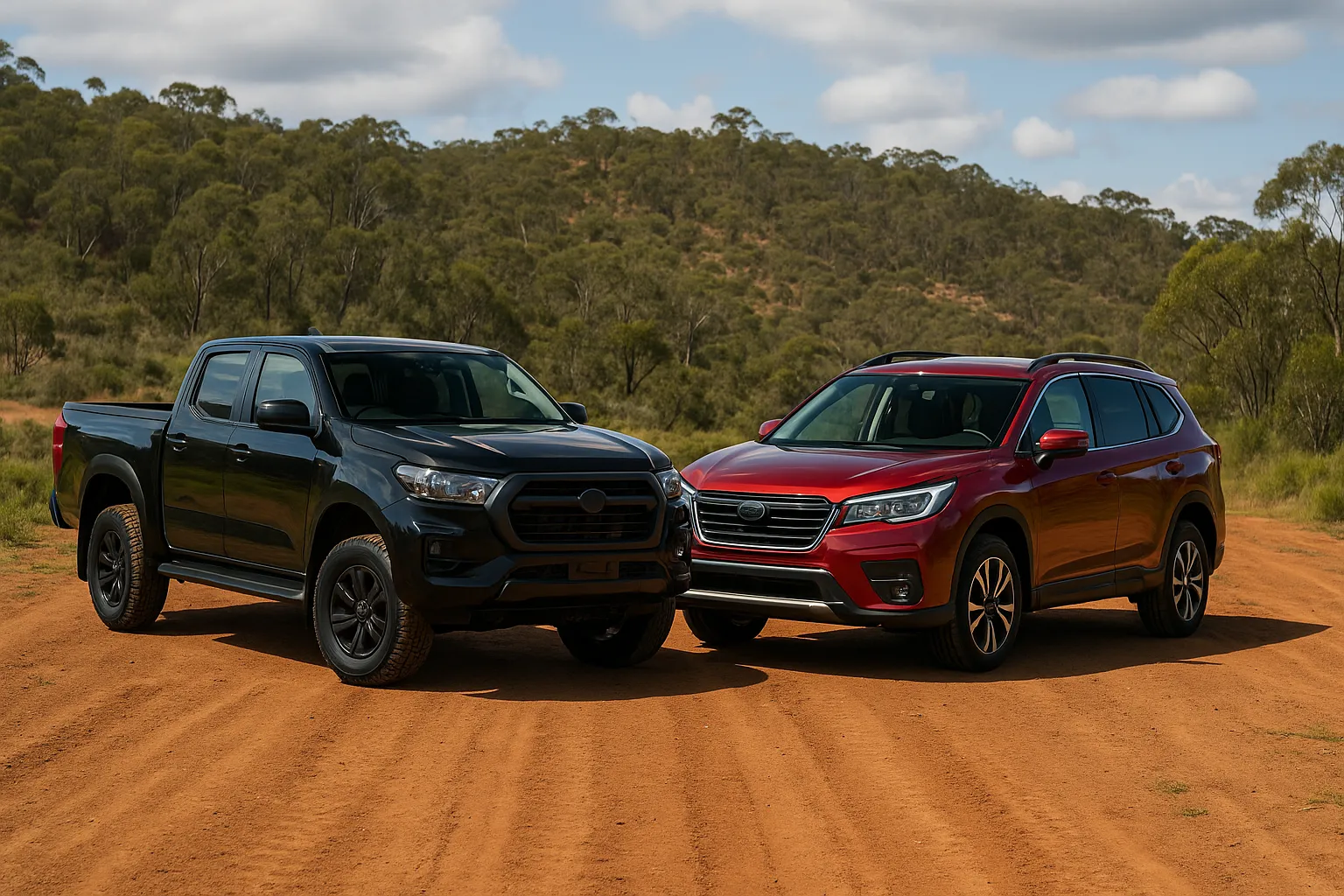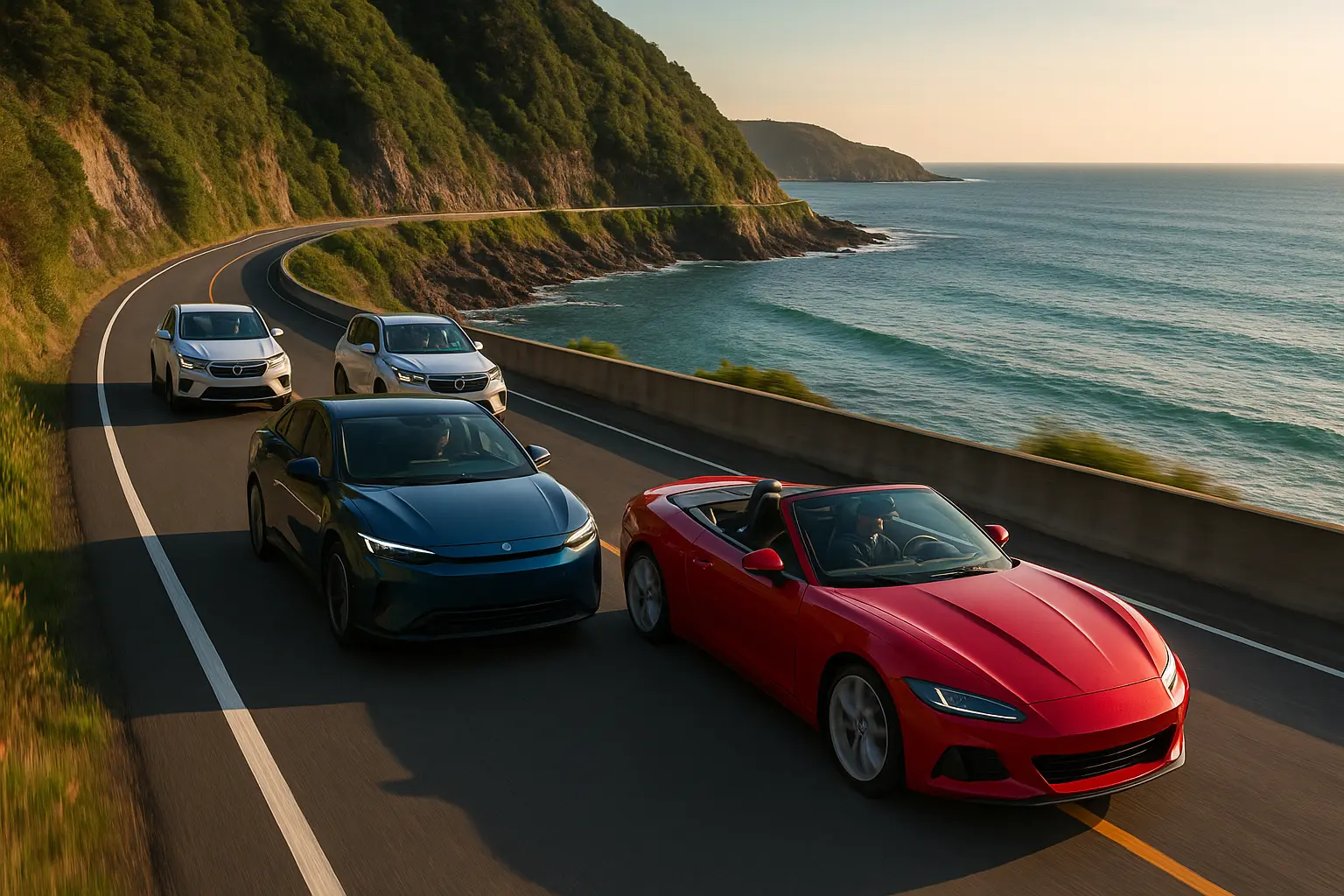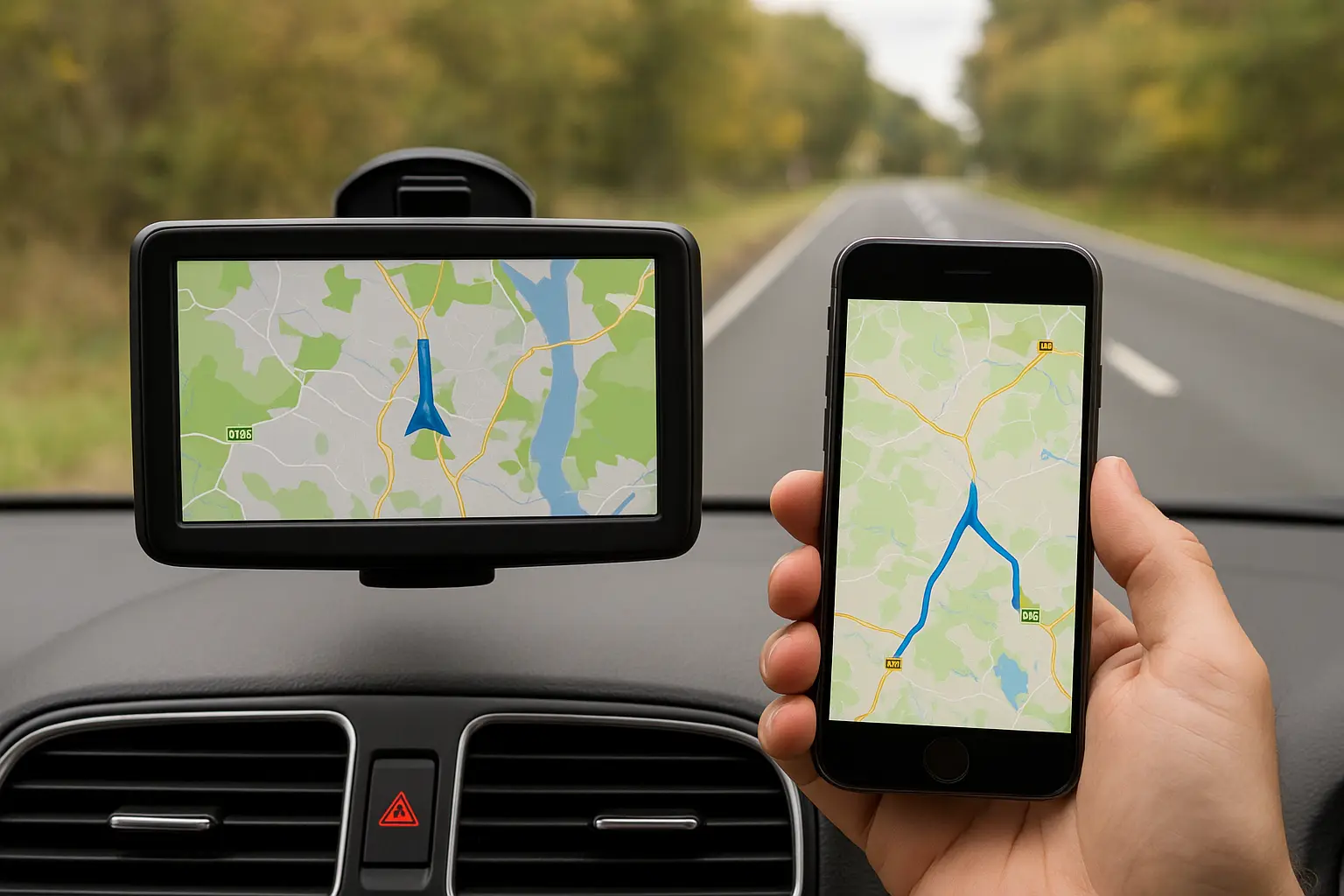Utes vs SUVs – What’s Better for Aussie Outdoor Adventures?
Australia is a land of open roads, rugged bush trails, and sprawling coastlines, making it the perfect playground for outdoor lovers. Whether it’s camping in the Grampians, surfing on the Gold Coast, or towing a caravan across the Nullarbor, your choice of vehicle makes a big difference. For many Australians, the debate comes down to two categories: Utes and SUVs.
In this comprehensive guide, we dive deep into the Ute vs SUV debate. We’ll compare everything from off-road ability and practicality to comfort and family-friendliness, helping you decide which one is truly built for your outdoor lifestyle.

1. Understanding the Basics: What Are Utes and SUVs?
What Is a Ute?
The term "Ute" (short for utility vehicle) is uniquely Australian. Traditionally, utes were car-based with a tray back, but today, they often refer to dual-cab 4x4 pickups like the Toyota HiLux or Ford Ranger. These vehicles are built tough, offer generous load capacity, and are known for their ruggedness.
What Is an SUV?
SUVs (Sport Utility Vehicles) come in many shapes and sizes, ranging from compact city cruisers to full-size 4WD wagons. They usually offer more interior space and comfort, making them family favourites. Think Toyota LandCruiser, Mitsubishi Pajero Sport, or Mazda CX-5.
2. Off-Road Capability – The True Test for Aussie Adventures
Utes: Built for Rough Terrain
Utes are traditionally seen as the king of the bush. With high ground clearance, low-range 4WD systems, and solid rear axles, many models like the HiLux, Ranger Raptor, or Isuzu D-MAX can take on serious off-road conditions. If your weekend includes creek crossings or bush bashing, utes are a solid bet.
SUVs: Surprisingly Capable
Not all SUVs are soft-roaders. Vehicles like the Toyota Prado, LandCruiser 300 Series, and Nissan Patrol come with full 4WD capability, hill descent control, and locking differentials. However, many crossovers (like the RAV4 or Kia Sportage) are more suited to light gravel and dirt tracks.
Winner: Tie – Depends on the SUV model. For heavy-duty off-roading, utes edge ahead.
3. Towing Power – For Caravans, Boats and Trailers
Utes: Towing Champions
Most dual-cab utes in Australia offer a braked towing capacity of 3,500kg. This makes them ideal for towing large caravans, boats, or even horse floats. Their ladder-frame chassis provides the strength required for serious hauling.
SUVs: Mixed Bag
Large SUVs like the Toyota LandCruiser and Ford Everest also offer 3,500kg towing capacity. However, many mid-size and compact SUVs max out between 1,500kg and 2,500kg, which might not cut it for heavy-duty adventures.
Winner: Utes
4. Load Carrying – Ute Trays vs SUV Cargo Space
Utes: Open Trays
Utes excel in load-carrying flexibility. With open trays, they can handle bikes, firewood, tools, or camping gear without issue. You can fit a canopy for added security or modular drawers for organised storage.
SUVs: Enclosed Boot Space
SUVs offer a cleaner, weather-protected boot space, better suited for luggage, prams, or groceries. However, space is more limited compared to an open tray, especially with a full family on board.
Winner: Utes for cargo flexibility, SUVs for weatherproof storage
5. Family Friendliness – Utes Are Catching Up
Utes: Evolving Dual-Cabs
Modern dual-cab utes are far more family-friendly than their predecessors. They come equipped with rear seats, ISOFIX anchor points, air conditioning, and touchscreen infotainment. But ride quality and cabin comfort still lag behind SUVs.
SUVs: Designed with Families in Mind
SUVs are the go-to choice for Aussie families. With better suspension tuning, more legroom, and a quieter cabin, they make for a more pleasant ride, especially on long trips.
Winner: SUVs
6. Ride Comfort and On-Road Handling
Utes: Utility First
Even the most refined ute still rides like a truck. Leaf-sprung rears (used for heavy load-carrying) make them bouncy and firm, especially when unladen.
SUVs: Better Ride Dynamics
With independent suspension systems and more refined chassis, SUVs generally handle better and offer superior comfort on sealed roads.
Winner: SUVs
7. Fuel Efficiency and Running Costs
Utes: Thirsty but Tough
Utes often have larger diesel engines and heavier frames, making them thirstier than mid-size SUVs. Expect 8–10L/100km for a diesel dual-cab. Servicing costs are also higher, especially for 4x4 models.
SUVs: More Options, More Efficiency
SUVs offer hybrid, petrol, diesel, and even electric variants. A Toyota RAV4 Hybrid, for instance, sips just 4.7L/100km. Compact SUVs generally cost less to run and maintain.
Winner: SUVs
8. Price and Value for Money
Utes: Strong Resale, High Demand
While utes can be expensive (top trims easily cross $70,000), they hold value exceptionally well. HiLux and Ranger consistently rank high for resale.
SUVs: More Range at Every Budget
From budget SUVs under $30K to luxury ones over $100K, the market is vast. They might depreciate quicker but offer better value in features, especially in base variants.
Winner: Tie – Utes win on resale, SUVs win on upfront value
9. Customisation and Aftermarket Accessories
Utes: Mod Heaven
Utes are a favourite for Aussie tinkerers. You can lift them, add snorkels, bullbars, winches, and more. The aftermarket support is massive.
SUVs: Limited but Growing
Larger 4WD SUVs like the Prado and LandCruiser have a good aftermarket following, but crossovers and compact SUVs are more limited in this regard.
Winner: Utes
10. Safety and Technology
Utes: Improving, But Still Catching Up
Many new utes now come with AEB, adaptive cruise control, lane assist, and 5-star ANCAP ratings. But some entry models still lack crucial features.
SUVs: Packed With Tech
SUVs generally come better equipped with safety tech, infotainment, and advanced driver assistance systems across all price points.
Winner: SUVs
11. Urban Driving and Parking
Utes: Bulky and Hard to Park
Dual-cab utes can be over 5.3 metres long and struggle in tight parking spaces. Their turning circles and height also make them less ideal for tight city streets.
SUVs: Compact and Versatile Options
Compact and mid-size SUVs are easier to maneuver and better suited for city life while still offering decent boot space and weekend escape potential.
Winner: SUVs
12. Which One Suits You Best?
Choose a Ute If You:
- Regularly tow heavy trailers, caravans, or boats
- Need to haul tools or bulky equipment
- Go off-roading frequently
- Want a rugged work-and-play vehicle
Top Ute Picks for Adventure:
- Toyota HiLux SR5
- Ford Ranger Wildtrak
- Isuzu D-MAX X-Terrain
- Mitsubishi Triton GSR
- GWM Cannon-X
Choose an SUV If You:
- Prioritise comfort and ride quality
- Want a family-friendly interior
- Live in the city but love the outdoors
- Need occasional off-road or gravel performance
Top SUV Picks for Adventure:
- Toyota Prado
- Subaru Outback AWD Touring
- Mitsubishi Pajero Sport
- Nissan Patrol
- Ford Everest Titanium
Final Verdict – The Right Tool for the Right Job
There’s no clear winner because the right vehicle depends on your lifestyle.
- Utes win when it comes to towing, off-roading, and flexibility.
- SUVs shine in comfort, efficiency, and family use.
If you’re an avid camper, tradie, or boat owner – a ute may be your best mate. But if you’re seeking a balance between weekday school runs and weekend getaways, a well-equipped SUV could be your ticket.
Leave a comment
Your email address will not be published. Required fields are marked *




